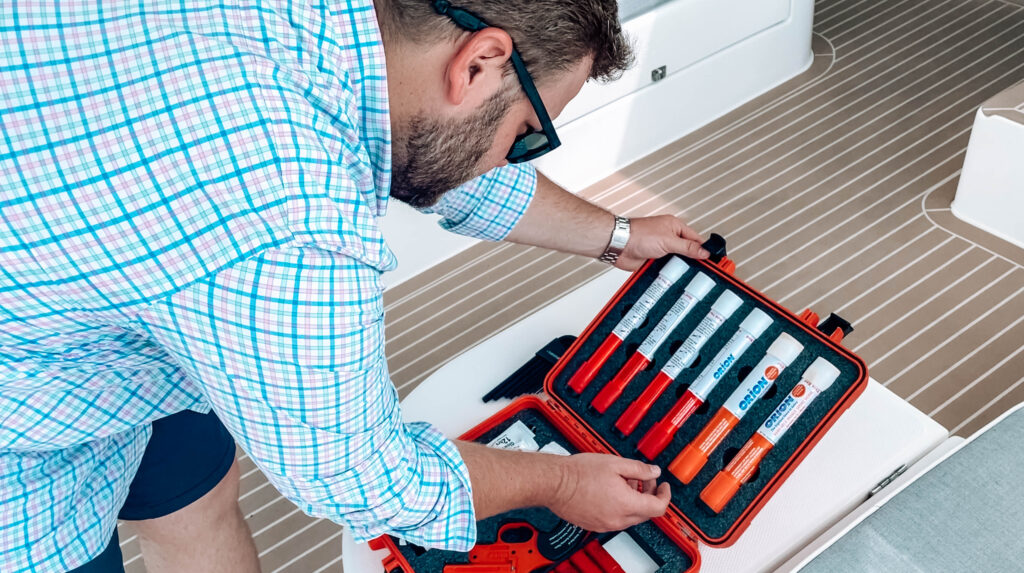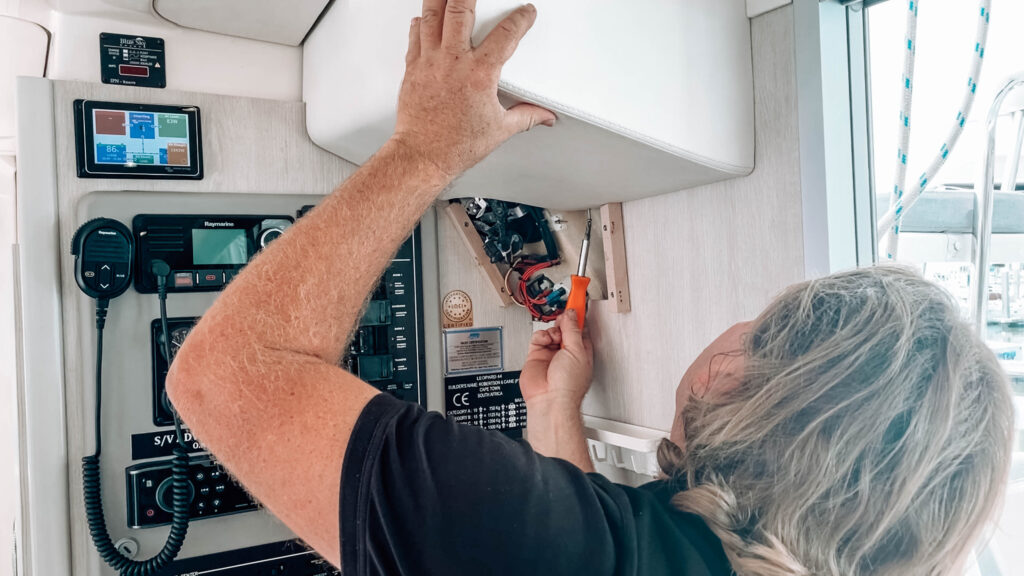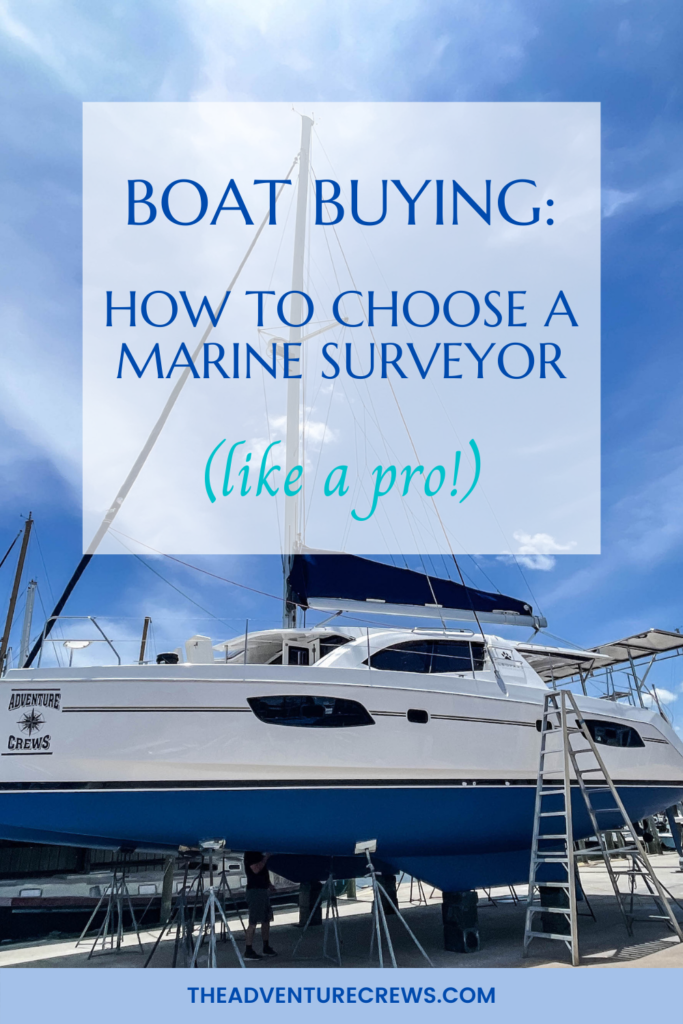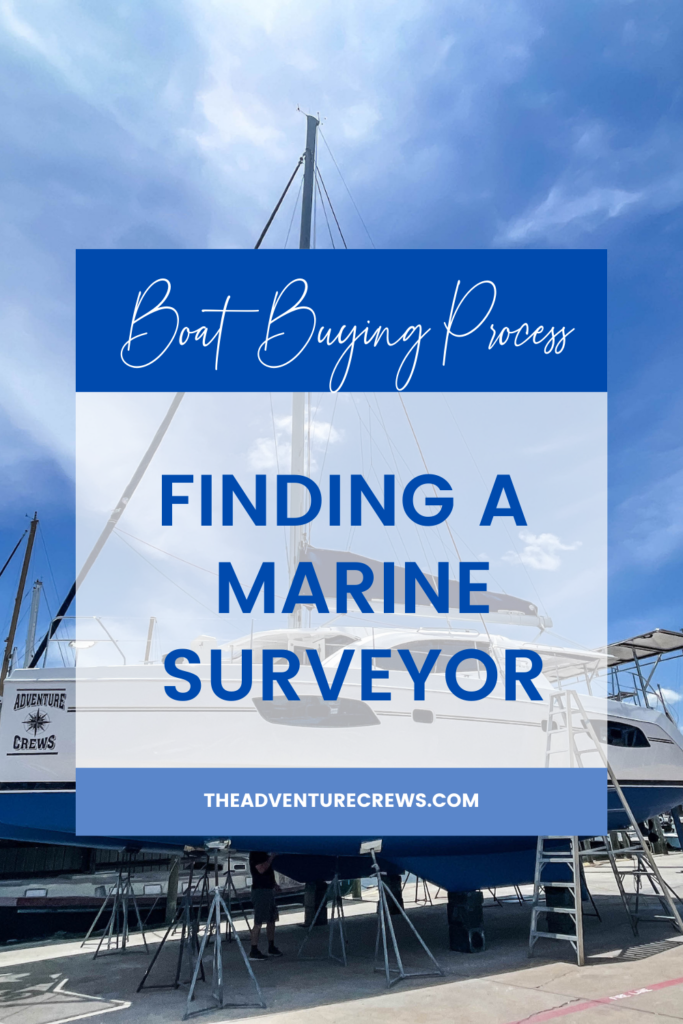It’s happening—your boat-buying process is coming together. You’ve sorted out the finances, convinced any partners involved, and now, you’ve found the perfect boat. But before you sign your life away, you’ve got one more step: choosing a marine surveyor

The boat survey is the most important part of buying any vessel. Similar to the home-buying process with its various inspections, you’ll want to arrange a marine survey before sealing the deal. Not only do most lenders and insurance companies require a marine survey, but it’s also in your best interest as the buyer, as it’s your chance to find any aspect of the boat that’s not working, compromised, or damaged.
Unlike the real estate industry, though, the marine industry is a small, close-knit group. Everyone knows everyone else in the business (as I like to say, they’re playing on the same sandbar), so you’ve got to hire someone you can trust, and who has no conflict of interest.
Related post: What to Expect When Buying a Boat
Choosing a marine surveyor
We had to comb through a few surveyors before we found the right person, and it was made even more difficult by buying our boat out of state. I can’t imagine buying a boat overseas, navigating cultural differences and language barriers, although many people do this successfully.
My main point here: do your research. Ask around. Talk to people who’ve done this. And my top suggestion for finding a marine surveyor: join a marine group on Facebook.


Facebook is your friend
These Facebook groups were invaluable to Emily and I when figuring all this out. They have so much information, and countless threads about other people’s experiences and recommendations. You can ask questions, read reviews, and weed out options when others advise you to steer clear.
Once you find someone you trust, you’ll schedule the survey, which is generally a three-part inspection: out-of-water, in-water, and the sea trial.
The marine survey process
Our boat was being stored on land in a boat yard, (also known as being “on the hard”) where it had had some work done. Because that particular boat yard didn’t have a large-enough lift to transport the boat into the water, we had to involve a third-party crane service.
Before that, though, we had our out-of-water inspection. This focuses on the outside aspects of the boat: they checked the hull and inspected it for moisture and any damage. They also went over the boat’s interior, checking the electrical systems, upholstery, floors and storage.
Still, there are lot of things you simply can’t check on land, so next, we had the in-water inspection. This part of the survey checks for water intrusion, and it focuses on the boat’s systems and pumps—everything the boat uses while at sea.
Finally, we did the sea trial, which takes the in-water survey even further. While you can complete the in-water survey sitting at the dock, the sea trial is like a test drive for a car—you take the boat out and put it through its paces. You lift the sails, bring the motor up to temperature and ensure it can operate at maximum RPMs, and check the steering and the feel of the boat as it moves. The sea trial is a crucial part of the survey; it’s your chance to catch problems only apparent while the boat is moving.
Final Steps
Assuming everything in the survey looks good, you’ll send copies to the seller, the lender, if using one, as well as your chosen insurance company.
If the surveys bring some issues to light but you still want to buy, you’ll need to discuss with the seller any price adjustments to compensate.
Worst case, the surveys tell you it’s best to start over with your boat search. That may be frustrating, but try not to dwell on the time and money you’ve lost—if you’d bought that dream boat, it may have ended up a nightmare.
One thing we did which really helped: we took our local marine expert, Rian from Mondo Marine with us to see the boat along with our hired surveyor. It was an added expense, but it allowed us to have an extra set of eyes on the survey process, and he was able to familiarize himself with the boat and catch any issues. Having someone there I trusted who could service the boat and work through any problems was worth every penny.


Share on Pinterest!
If you enjoyed this post, please share it on Pinterest. We’ve added these images for easy pinning!












